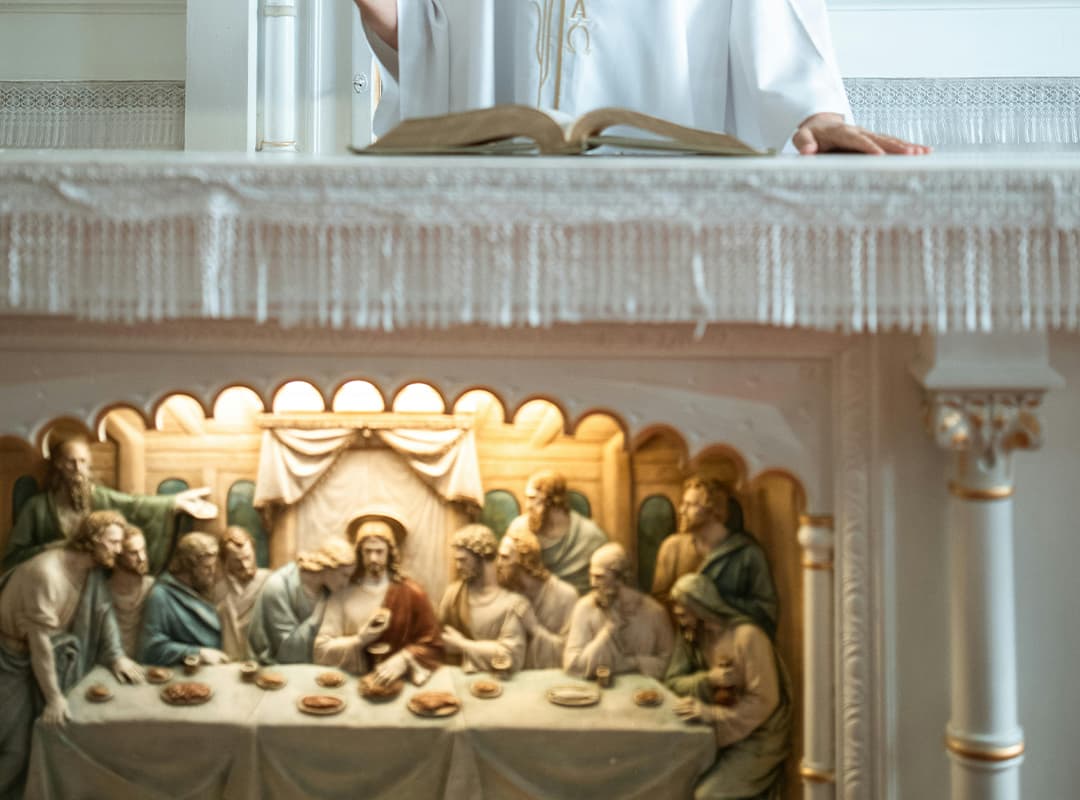We should approach the phenomenon of Orthodoxy in such a way as to touch upon all of its aspects.
First, Orthodoxy manifests itself in the sources of its doctrine. We are talking about the Holy Scriptures and Sacred Tradition. Both sources of faith and grace are seen in unity and complement each other. There is a theological opinion that the Holy Tradition is normative in nature due to the fact that it reveals the truths of faith proclaimed in the Holy Scriptures. The Tradition includes: “apostolic instructions”, definitions of faith and decisions of the first seven Ecumenical Councils and several local ones, ancient texts of worship, works of the Holy Fathers, prayer canons, monastic statutes, acts proclaiming the canonization of saints. All of this forms a certain tradition, where the spiritual experience of the Church has been accumulated, which is constitutive of the religious practice of today.
Second, Orthodoxy represents itself through dogma. In this regard, it recognizes the Nicene-Constantinople Creed (see the topic “Christianity: General Characteristics”), adopted at the first two Ecumenical Councils (of the then unified Church), as inviolable. This dogmatic basis of the Orthodox faith was strongly defended against heretical ideas that accompanied the life of the Church during the formation of the “symbol.” It remains so now, because in Orthodox theological thought there is an idea that dogmatic development is impossible, unlike in Roman Catholicism or trends in Protestantism. In other words, the fathers of the first seven councils gave a complete (rational) definition of dogmas that guarantees their further spread and popularization.
Third, Orthodoxy should be defined as a cult system. Cult practice gives the most expressive forms (interpretations) of the provisions of the doctrine itself. Cultic actions are centered on worship as a collective communion of the church community with God. The latter has three circles: daily, weekly, and annual. Each of them includes events fundamental to this faith from both the sacred history of the Old Testament and the New Testament. For example, weekly services are dedicated to: On Monday – to the “powers of heaven”; on Tuesday – to the prophets of the Old Testament, especially John the Baptist; on Wednesday and Friday the Church recalls Judas Iscariot’s betrayal of Jesus Christ, His great suffering and death on the cross; on Thursday it glorifies the apostles, but pays special tribute to St. Nicholas the Wonderworker of Lycia; on Saturday all saints are honored. Finally, and this feast is the basis of all liturgical circles, Sunday is the day of the Resurrection of Jesus. All the other holidays logically coincide with this event, because it represents the highest meaning of Orthodox Christianity. Further, when considering the cult system in Orthodoxy, it is necessary to pay attention to the structure and course of liturgical practice, which consists of prayers in which the Church asks for mercy or honors God, spiritual chants, bows, signs of the cross, and sacraments.
The sacraments are the most important link in the cultic practice of Orthodoxy. Of course, the sacrament is interpreted as a sacred action that gives the believer spiritual gifts (from God through His grace). At least this mystical action is performed in such a way that everyone can see its form. The content of all seven sacraments, which the Orthodox Church has established, must be explained by considering them separately and sequentially.
It is believed that any person bears the burden of the sin of the forefathers (Adam and Eve), so water baptism (in the name of the Father and the Son and the Holy Spirit) leaves them behind, directing the soul to Godhood, that is, full-fledged church life. The next sacrament is the anointing of the sick. It is a ritual in which a priest anoints a person with oil (oil consecrated with a special agent). In doing so, the believer receives from God the gracious power that will be useful to him in his earthly life. The most important sacrament in Orthodox worship is the sacrament of the Eucharist, or communion.
In the practice of the Orthodox Church, there is also the sacrament of the oil consecration, which is meaningfully connected with the fact that any person (even if he or she is sick) can recover bodily and spiritually. People’s desire for healing is satisfied by this sacrament. The Church performs it several times: during Lent, when a person is sick or dying. Naturally, all these actions should not be performed by ordinary people, but only by those who have reached a certain degree of spiritual maturity, who can perform the functions of a minister of worship and be a pastor. In this case, the Orthodox Church performs the sacrament of priesthood. A man who enters the ministry undergoes a special ritual in which the acting Bishop (archbishop, metropolitan) symbolically involves him in the apostolic ministry. This person, through the prayers of the Church, receives grace from God for priestly activity. A separate sacrament established in the Church is the sacrament of marriage. Since Christianity gives a person a choice of the path of salvation (either monasticism or married life), the Church should sanctify the relationship between a man and a woman if they share each other’s feelings, are ready to raise children in the spirit of the Christian moral ideal, and help each other on the way to the Kingdom of God.


